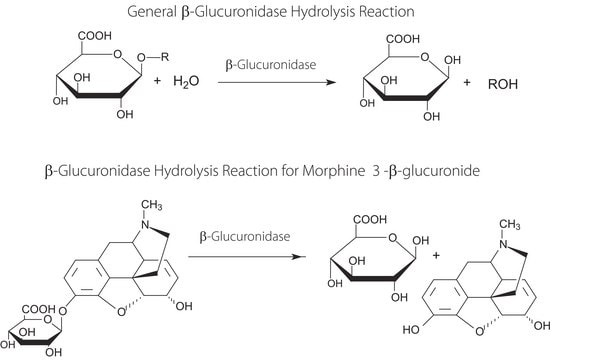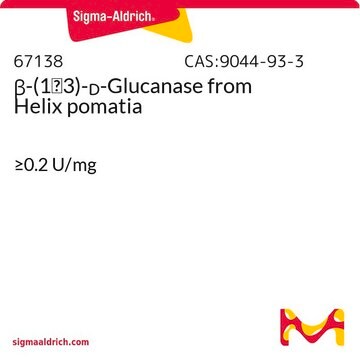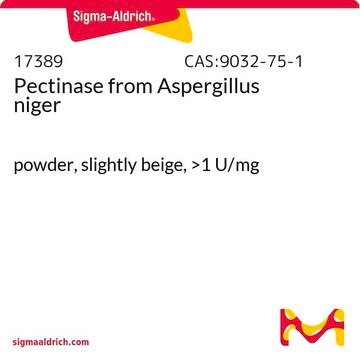C8274
Cytohelicase from Helix pomatia
lyophilized powder
Synonym(s):
Snail gut enzyme
Sign Into View Organizational & Contract Pricing
Select a Size
All Photos(1)
Select a Size
Change View
About This Item
Recommended Products
Application
Cytohelicase from Helix pomatia has been used:
- in the enzyme solution for preparing the cell nuclei for immuno fluorescent in situ hybridization (immunoFISH)
- in the enzyme mix to analyze meiotic cells at diakinesis and later stages in anthers
- in the enzyme mix for the analysis of mitosis in anthers
Cytohelicase from Helix pomatia has been used to study the isolation of yeast protoplasts using various preparations of the hepato-pancreatic juice of Helix pomatia.
The enzyme from Sigma has been used for cytohelicase assay. The enzyme assay was used while studying the effects of MNN10 gene-disruption on protein secretion in Kluyveromyces lactis and Saccharomyces cerevisiae cultures.
Biochem/physiol Actions
Cytohelicase from Helix pomatia is used in the preparation of synaptonemal complex spreading techniques along with bovine serum albumin. It plays an important role in the digestion of cell wall. Cytohelicase interacts with chromatin and improves the adhesion of synaptonemal complexes to the hydrophobic plastic film.
Analysis Note
Contains glucanase/laminarinase activity
signalword
Danger
hcodes
pcodes
Hazard Classifications
Resp. Sens. 1
Storage Class
11 - Combustible Solids
wgk_germany
WGK 1
flash_point_f
Not applicable
flash_point_c
Not applicable
ppe
Eyeshields, Gloves, type N95 (US)
Choose from one of the most recent versions:
Already Own This Product?
Find documentation for the products that you have recently purchased in the Document Library.
Customers Also Viewed
Pairing analysis and in situ Hybridisation reveal autopolyploid-like behaviour in Solanum commersonii X S. tuberosum (potato) interspecific hybrids.
Gaiero P, et al.
Euphytica, 213(7), 137-137 (2017)
Improved method of enzyme digestion for root tip cytology.
Lattier JD, et al.
Hortscience: a Publication of the American Society For Horticultural Science Hortscience, 52(7), 1029-1032 (2017)
ImmunoFISH: simultaneous visualisation of proteins and DNA sequences gives insight into meiotic processes in nuclei of grasses.
Sepsi A, et al.
Frontiers in Plant Science, 9(7), 1193-1193 (2018)
The effect of bovine serum albumin and cytohelicase on surface-spread synaptonemal complexes of Rye (Secale cereale).
De Jong JH and van Eden J
Stain Technology, 63(4), 213-220 (1988)
M Diatewa et al.
Biochimie, 63(1), 67-69 (1981-01-01)
Conversion of large amounts of Saccharomyces cerevisiae cells to protoplasts is studied using various preparations extracted from Helix pomatia hepato-pancreatic juice. The most favourable yield in two hours incubations (88 per cent) is obtained with 20 ml cytohelicase, a chitinase
Our team of scientists has experience in all areas of research including Life Science, Material Science, Chemical Synthesis, Chromatography, Analytical and many others.
Contact Technical Service















